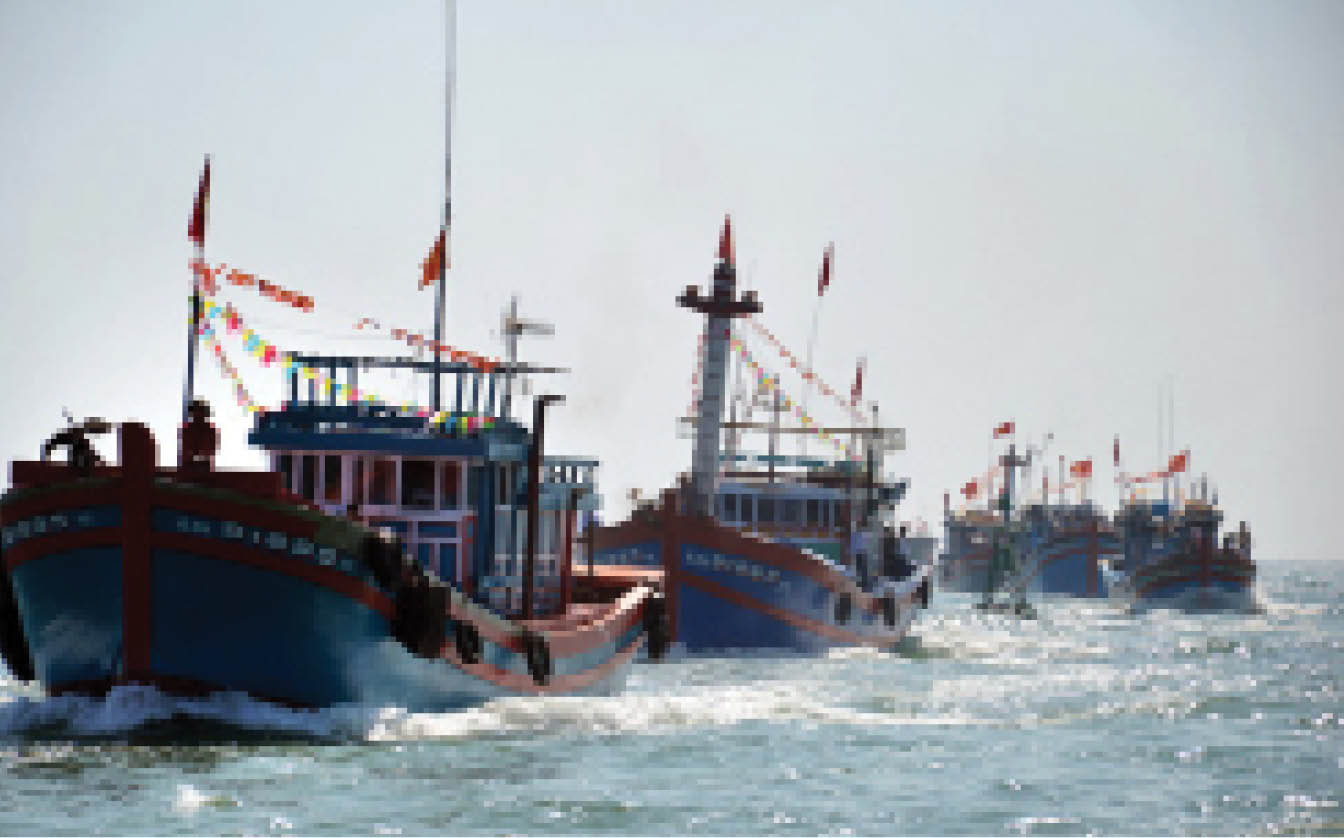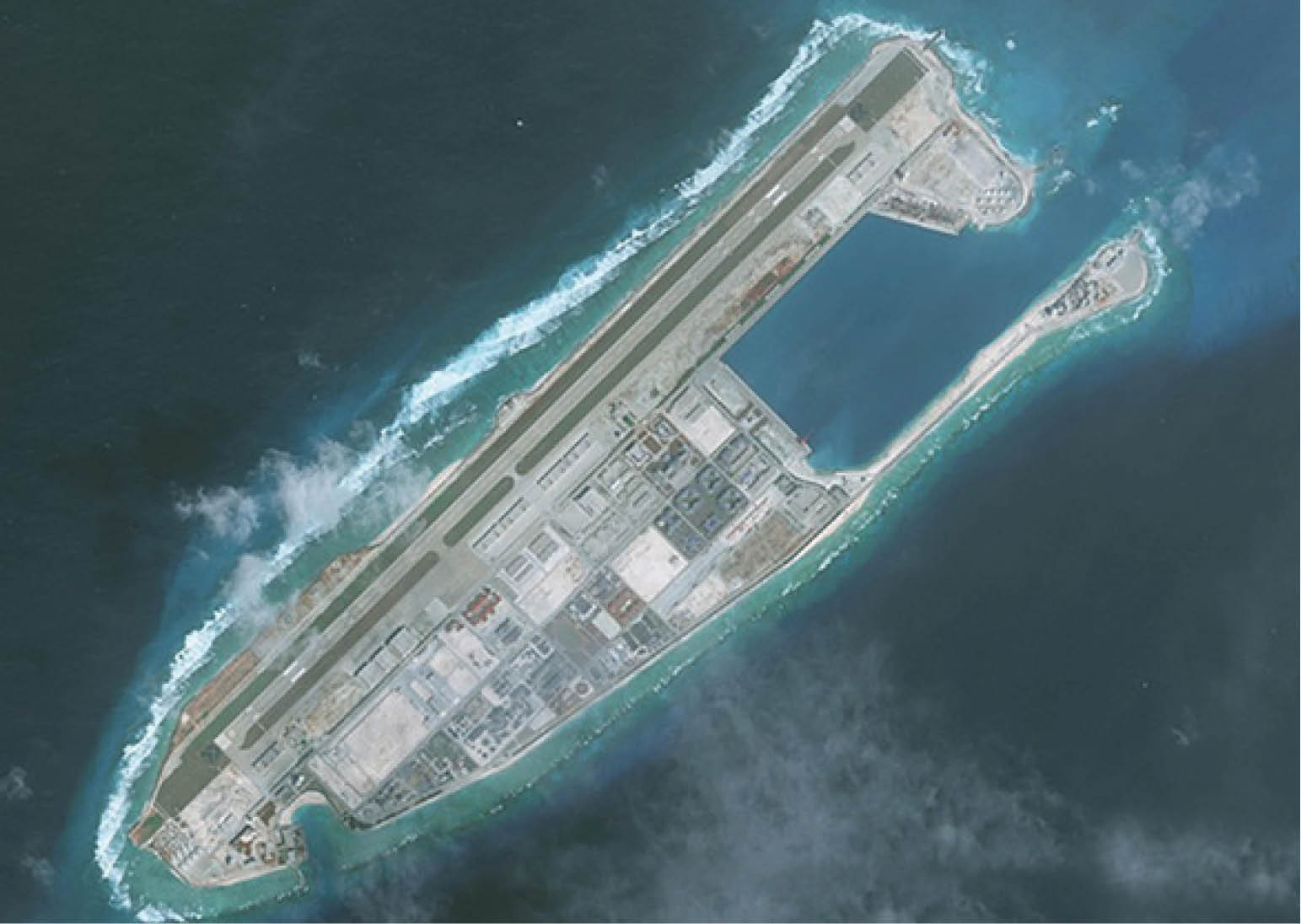On April 18, 2020, China established the so-called "Nansha District" and "Xisha District,” belonging to “Sansha City”. This is the city that China announced in 2012, considered as the administrative unit that manages the Truong Sa and Hoang Sa of Vietnam. Those actions by China have violated the Charter of the United Nations and the Declaration on Conduct of the Parties in the South China Seaand other international laws.

Fishing boats on the sea in Quang Ngai owned by Vietnam. Photo: Tuoitre.vn
Violating the UN Charter and UN Announcement in 1970
With so much evidence and historical and legal documents China has never owned Hoang Sa and Truong Sa Archipelagoes. They belong to Vietnam.
In 1956, China seized the eastern islands of Hoang Sa Archipelago and the rest in January 1974 from the military of Saigon. Those islands have been occupied illegally until now. Historical documents and witnesses saw the dominance of Chinese soldiers who attacked and tried to seize Hoang Sa Archipelago at any cost.
Truong Sa is a big archipelago of Vietnam consisting of the most number of islands in the East Sea. Presently Vietnam owns 21 islands and China is occupying 7 islands most of which are rock islands and sunk ones including Gac Ma Island, which was seized by China in March 1988. China also at the same time attacked and seized some other islands owned by Malaysian and Philippine soldiers.
On October 24th, 1970, the UN issued the "Declaration on the Principles of International Law concerning Friendly Relations and Cooperation among States in accordance with the Charter of the United Nations.” This is considered a supplementary document which fully develops the Charter of the United Nations signed on June 26, 1945.
The declaration clearly states: "No territorial occupation by force or by threat is legal." Obviously, China's announcement about the new administrative units, or in other words, China’s claim about the sovereignty over Hoang Sa and Truong Sa Archipelagoes is illegal and violates the Charter of the United Nations.
In retrospect, these two islands were illegally seized by China by military force. Neither of the islands belongs to China or had been occupied by other countries which China needed to take back like what their spokesman announced.
The 1970 announcement of the United Nations clearly said: “The territory of a country cannot be occupied by military force. It violates the terms of the United Nations.” The truth is that China did seize the islands by military force. Its actions have been condemned by other countries and are facing strong reaction from Vietnam.
The Chinese Foreign Affairs and the mass media in China often state that they are unarguably taking back their islands. But in reality, they have never had any specific historical evidence. Their announcements were just fallacy and to mislead the international public opinion and deceived their Chinese people about their illegal action.

Vietnam’s Fiery Cross Reef in Truong Sa is occupied illegally by force and has been turned into an illegal man-made island by China. Photo: nld.com.vn
Resolving the conflict by peaceful and justice means
As mentioned in item 3, part 2 in the Charter of the United Nations: “All UN members solve international conflicts in peace so that they will not damage the international peace and justice.” There have been many bilateral and multilateral consents between China and ASEAN countries in resolving the conflicts.
The most jurisdictional is the Declaration on Conduct of the Parties in South China Sea (DOC) signed on Nov. 4, 2002 at the summit conference between ASEAN countries and China. This is considered the first political document that was obtained concerning solutions for complicated problems in the East Sea.
The most important provision states: "The parties must commit to the goals and principles of the UN Charter and the 1982 United Nations Convention on Law of the Sea." At the same time, "the countries recognize other principles of the international law, considered the essential rule governing relations between state and state."
The relevant sides have agreed to negotiate step by step, aiming at signing the Declaration on Conduct of the Parties in the South China Sea. However, for many years now, China has always violated, created things favorable for it in negotiation and deliberately delayed its passage.
Since DOC was signed now, the situation has been becoming more complex. In 2009, China claimed its ownership of the East Sea and the so-called “nine-dash line.”
With the map given, China's maritime border accounts for 80% of the East Sea, deeply penetrating the territorial waters and the exclusive economic zones of Vietnam and coastal ASEAN countries. China’s claim about the maritime boundary is illegal and does not base on science.
The UN Convention on the Law of the Sea (UNCLOS) decides that the territorial waters of coastal countries are 200 nautical miles. This has been broken by China by drawing by itself the "nine-dash line.” With this drawing, many islands and waters inside the “nine-dash line” in the future will become administrative units of China. That is extremely unreasonable in international relations.
Seizing the territory of another country by force is illegal. It violates the international law. Invading another country's territory then turning it into an administrative unit like what China did is unacceptable. Vietnam is determined to protect the sovereignty over the sea and islands, including Hoang Sa and Truong Sa Archipelagoes as repeatedly stated by the spokesman of our Ministry of Foreign Affairs.
By NGUYEN PHUOC KHANH